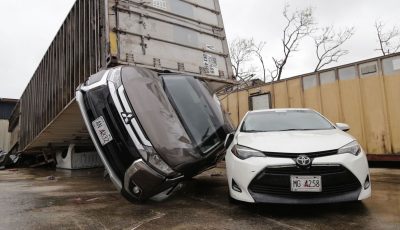‘Build better, stronger and safer’
This was the message discussed by representatives of the Department of Public Works and the Federal Emergency Management Agency at the Saipan Chamber of Commerce general monthly meeting yesterday.
Showing pictures of destroyed homes and damaged buildings after Typhoon Soudelor, acting building safety official Tom Deleon Guerrero said construction practices in the CNMI has to change.
“As you can see, there is so much damage, left and right. What went wrong? All that this is, the building practices in the CNMI, we need to get out there and build, better, safer, stronger,” Deleon Guerrero said.
“We want to try to make sure that all of the connections, from the roof to the wall to the floor, are securely fastened,” he added.
Deleon Guerrero discussed some of the ways of how building better can be achieved.
Starting with the roof, Deleon Guerrero said proper nails should be used and that they should be spaced properly. Washered roofing nails with an annular ring shank of at least 3 inches long and spaced at 6 inches on center throughout the perimeter of the roof and spaced at 12 inches on center throughout the interior field must be used.
A better truss system can also be achieved by using two by six treated lumber as well as metal connector plates and hurricane ties or straps.
For walls, Deleon Guerrero said wooden wall studs must be spaced no further than 24 inches on center. For concrete masonry walls, horizontal and vertical reinforcements must be used.
Better floor connections can also be achieved by installing J bolts and hurricane ties or straps.
Residents can also seek the help of the Building Safety Code Division.
“The Building Safety Division is really there to help the community and the public,” Deleon Guerrero said.
He said they currently have two basic designs, load-compliant house plans available at the BSC office and are working to have six more house plans to help the rebuilding efforts in the community. They are also working with hardware stores to bring in new material, technology, and required construction hardware.
For their part, FEMA said it is very important to do mitigation steps now.
“I know we’re thinking right now of recovery but while you are in the midst of rebuilding and recovery, it’s so important to go the extra mile, take those steps to build better, safer, stronger,” said Susan Langhoff, FEMA private sector division assistant external affairs officer.
Hazard mitigation branch director John Synnott added that the key is for people who are rebuilding to work with the DPW.
“The one thing I do know, and I have learned in 22 years [with FEMA] is that mitigation works,” Synnott said.



























